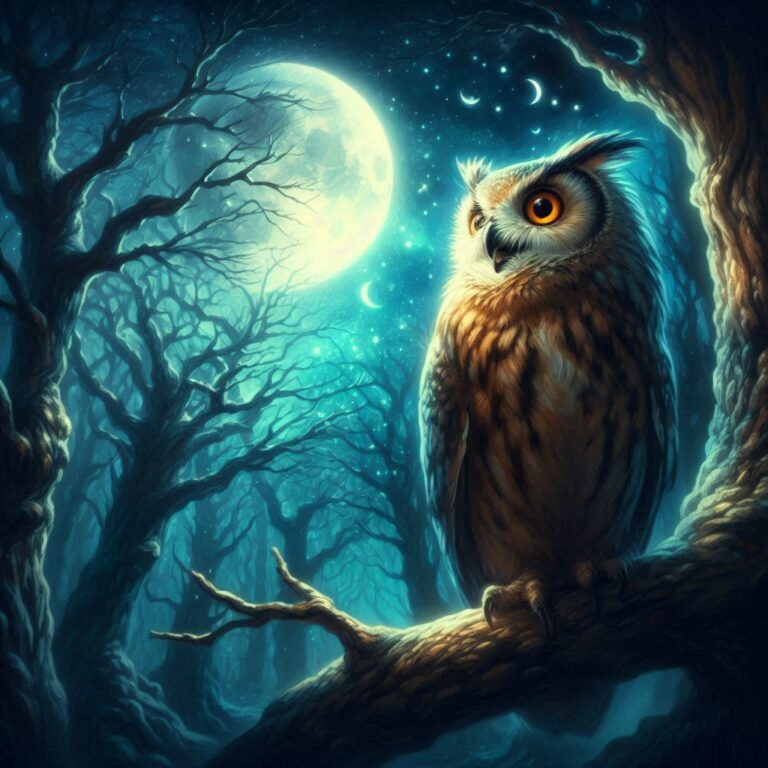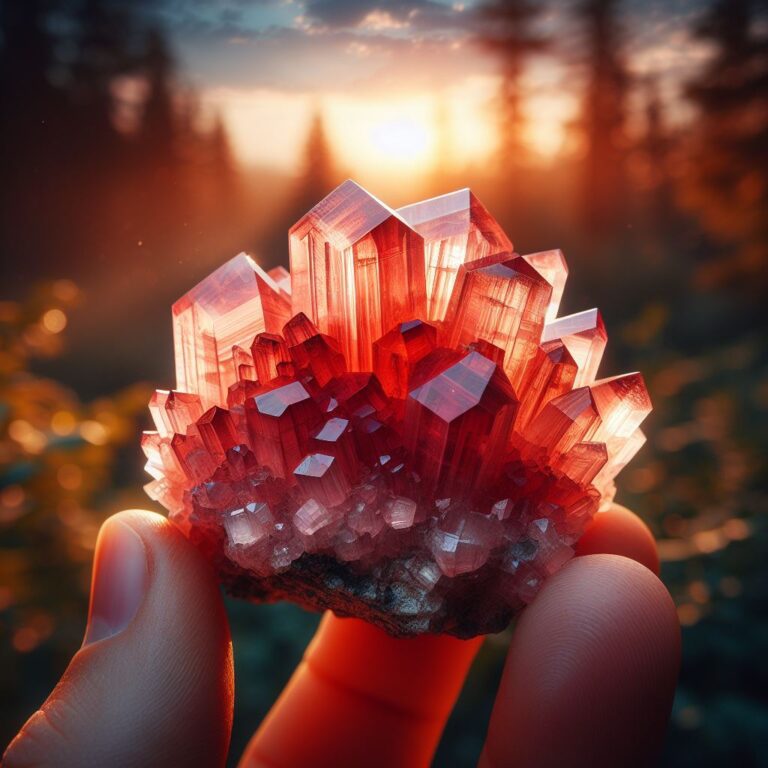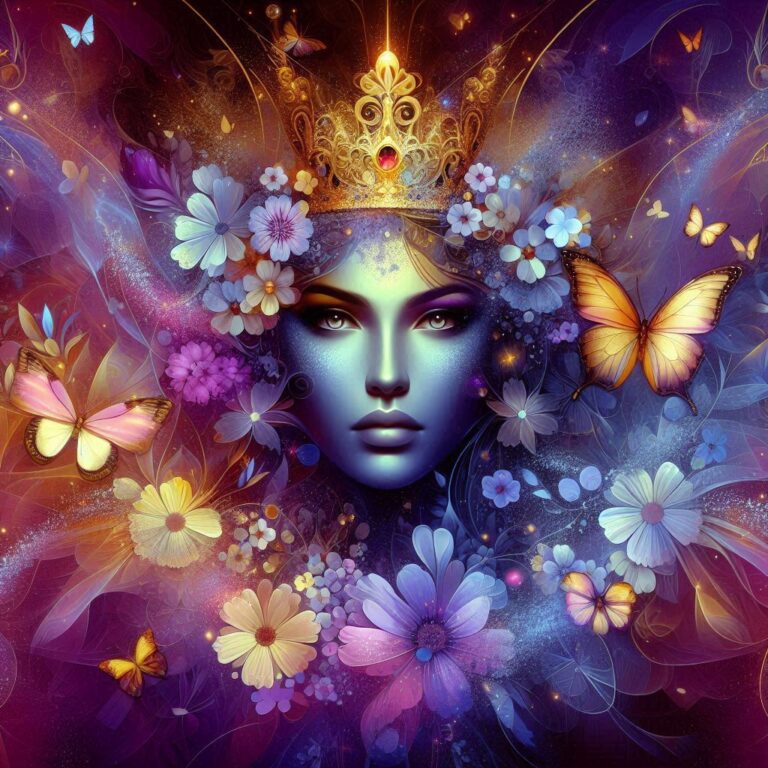What is the Spiritual Symbolism and Meaning Behind the Moon?
Look up at the night sky when the Moon is out, and you can’t help but feel awed. The glowing orb has captivated humanity since the beginning of time, being associated with powerful spiritual symbolism across cultures. As it waxes and wanes through its phases, the Moon takes on different spiritual meanings that provide insight into the human experience.
In this article, we’ll explore the Moon’s extensive symbolic significance so you can understand what this celestial body has meant to people through the ages. From its links to femininity and emotion to its representation of cycles and renewal, the Moon is rich with spiritual wisdom. Read on for an illuminating journey under the Moon’s glow.
Here’s a quick interpretation:
The Moon has carried profound spiritual symbolism across cultures since ancient times. It is most commonly connected to femininity, cycles of change, human emotions, the subconscious mind, and finding balance. The phases of the Moon also represent birth, enlightenment, fruition and rebirth – the eternal cycle of life. Its light in darkness inspires inner reflection to illuminate our spiritual path.

The Feminine Divine
One of the most predominant spiritual associations of the Moon has been with the feminine divine. In multiple belief systems, the Moon has been personified as or connected to female goddesses, mainly because it reflects the Sun’s light rather than emitting its own. Just as women were seen to receive, nurture and give back life, the Moon was linked to similar ideals.
Some examples of Lunar goddesses include Artemis, the Greek goddess of the hunt, forests and childbirth, along with her Roman equivalent, Diana. In Norse mythology, the goddess Frigg represented love, marriage and motherhood and was believed to be connected to the Moon. The Egyptian goddess Isis also embodied femininity, magic and the cycle between death and rebirth.
Across eastern cultures too, from China to India, lunar deities have been revered as symbols of compassion, fertility and divine motherhood. The innate feminine qualities of nurturing, changeability, emotionality and mystery became embodied in the spiritual concept of the Moon.
Cycles of Change
The most visible spiritual meaning behind the Moon undoubtedly comes from its phases, which constantly transition in a cycle every 29.5 days. The Moon waxes, reaches its peak fullness, then wanes back to complete darkness before emerging again as a slender crescent.
This cyclical nature of the Moon comes to represent larger cosmic cycles of death and rebirth in nature. As you watch the phases change in the sky month after month, it is easy to visualize the continuance of life even as forms change and disappear. Every ending ushers in a new beginning, just as the fading Moon gives way to a renewed crescent.
The lunar cycle also parallels cycles of human life from birth to death. And in many belief systems, the soul itself is thought to journey across lifetimes through rebirth just as the lunar phases consistently revive themselves.
Ruler of Emotions
From words like ‘lunacy’ and ‘looney’ being derived from ‘luna’ (the Moon), you can gather that the Moon has long been associated with emotions, madness and instability in human psyche. Beliefs across many ancient cultures suggested that the Moon’s pull could impact personality traits and behavior on Earth.
Even today, despite lack of scientific backing, many think full moons tend to incite erratic actions, anxiety, insomnia and emotional turmoil in people. Whether this belief arose from superstitions or actual observed patterns, the Moon continues to be linked with the emotive inner life. Its changeability echoes the similarly fluid nature of human moods and feelings.
Beacon in the Darkness
Appearing luminously in the pitch dark of night, the Moon acts as a guiding light when all else is hidden by shadow. For this reason, it has taken on spiritual meanings related to illuminating unseen realms, magic and mystery. The light of the Moon was thought to bring heightened intuition and visionary states.
Shamans, mediums and all kinds of seers were believed to receive their powers under the lunar glow. In occult and magical traditions today, rituals for psychic abilities, prophetic dreams and communication with spirits are still carried out during full moons to harness its visionary energy.
The lunar cycle also represents the cyclical nature of self-reflection. When the Moon disappears for a few days during its dark phase, it is the opportune time for soul-searching and going within. The full phase then scatters light to illuminate inner truths sensed in the darkness.
Yin to the Sun’s Yang
In Chinese philosophy, the Moon embodies the cosmic yin – associated with shadows, darkness, water, emotion, intuition and the inner life. The Sun represents the opposing yang – brightness, fire, aggressiveness and action. Together, they form two halves of a harmonious whole reflecting balance and interdependence.
Most world myths also hold solar deities to be male and lunar deities to be female for similar reasons – the Moon encompassing feminine traits of changeability, receptiveness and fluidity perfectly balances solar traits of constancy and rigidity. Neither masculine nor feminine energies can exist without needing qualities of the other at times.
The Moon’s spiritual meaning thereby stems from its representation of complementary dual forces working together in harmony as seen in so much of human life. Darkness facilitates rest as much as activity needs light. Emotion balances logic. Cycles always revive. Just as the Moon disappears and returns, life sustains its continuity.
The Journey Inward
While the Sun’s glare visibly illuminates the physical world, the Moon casts shadows, silhouettes and silver outlines rather than sharp brightness. In doing so, it turns our gaze inwards instead of outwards, allowing space for deeper reflection.
Full moons especially invoke a contemplative mood when the landscape takes on a magical aura under hypnotic lunar glow. The Moon then symbolizes the inward subconscious journey – into our deepest needs, fears, intuitions and discoveries of self-knowledge within.
Just as the changing phases of the Moon reflect continuous cycles of waxing and waning, so too do our inner states and self-concepts. What we may feel absolutely convinced of one day can entirely change with time and experience.
Through its imagery of light piercing inner darkness to ultimately illuminate unseen truths, the Moon carries the spiritual meaning of guiding our quest for eternal transformation through self-reflection.
Symbolic Mirror to Creation
Finally, the Moon also represents a mirror of the creative impulse behind all life. In Islamic tradition, the Moon symbolizes reflection of the single Divine source manifested in countless shapes through the world. The Upanishads describe the Moon as a gilded dish filled with Amrit or divine nectar, again symbolizing form mirroring spiritual essence.
In Vedic astrology, the Moon governs emotion and mind, thereby developing ego-identity or the sense of individual self that forms each soul embodiment. As it waxes toward fullness, the reflected light grows to become a glowing disc in the sky – just as an individual soul evolves by reflecting Spirit to allow its inner light essence to fully shine through.
So the Moon demonstrates creativity, movement and change as it orbits Earth every month. It reminds us of the infinite expressions the single Divine source can take. And it carries hope that just as the sliver of new moon steadily brightens into glorious fullness, we too may realize our creative spiritual potential over time.
Conclusion
When you next observe the Moon’s visibility growing and diminishing across night skies, imagine what spiritual wisdom past cultures read into its symbolism. The Moon is a mirror reflecting the endless dance between light and darkness during life’s journey from this world to the next. It guides the flow between contraction and expansion of our very consciousness through phases of self-reflection.
Rather than take its changing appearance for granted, use the visual reminder to reflect on what spiritual meanings continue to be relevant in modern times. Tap into the intuitive, mystical and cyclic nature of existence that so dominates the Moon’s symbolism for people across time and civilizations.
FAQ
1. Why is the moon associated with femininity in spiritual symbolism?
The moon is associated with femininity due to qualities like changeability, emotion, mystery, receptiveness, and fertility – as opposed to the sun’s constancy, aggression, and rigidity, which are viewed as masculine. The moon also reflects sunlight rather than emitting its own, just as women receive and nurture life.
2. How did ancient people link the moon with human madness or ‘lunacy’?
Ancient people believed the moon’s phases could impact behavior and emotions on earth. When the moon was full, erratic actions, anxiety, insomnia and emotional turmoil increased – leading to the term “lunacy” being derived from the word for moon, “luna”.
3. What does the cyclical nature of moon phases symbolize?
The waxing and waning cycle of moon phases symbolizes the cyclical nature of life – death, rebirth and the continuance of life even as forms change. It represents larger cosmic cycles as well as our internal cycles of self-reflection and spiritual evolution.
4. How does the moon represent balance like yin and yang?
The moon (yin) and sun (yang) represent balance as feminine/masculine, dark/light, emotion/aggression – neither can exist without the other. The moon embodies receptive, cool, dark qualities that balance solar traits of constancy and burning bright energy.
5. What inner reflection does the moon’s light inspire?
The moon’s glow inspires contemplation of shadowy realms within ourselves – our deepest needs, intuitions, fears and discoveries of self-knowledge. Just as the moon waxes and wanes, our inner states and self-concepts evolve through cycles over time.






